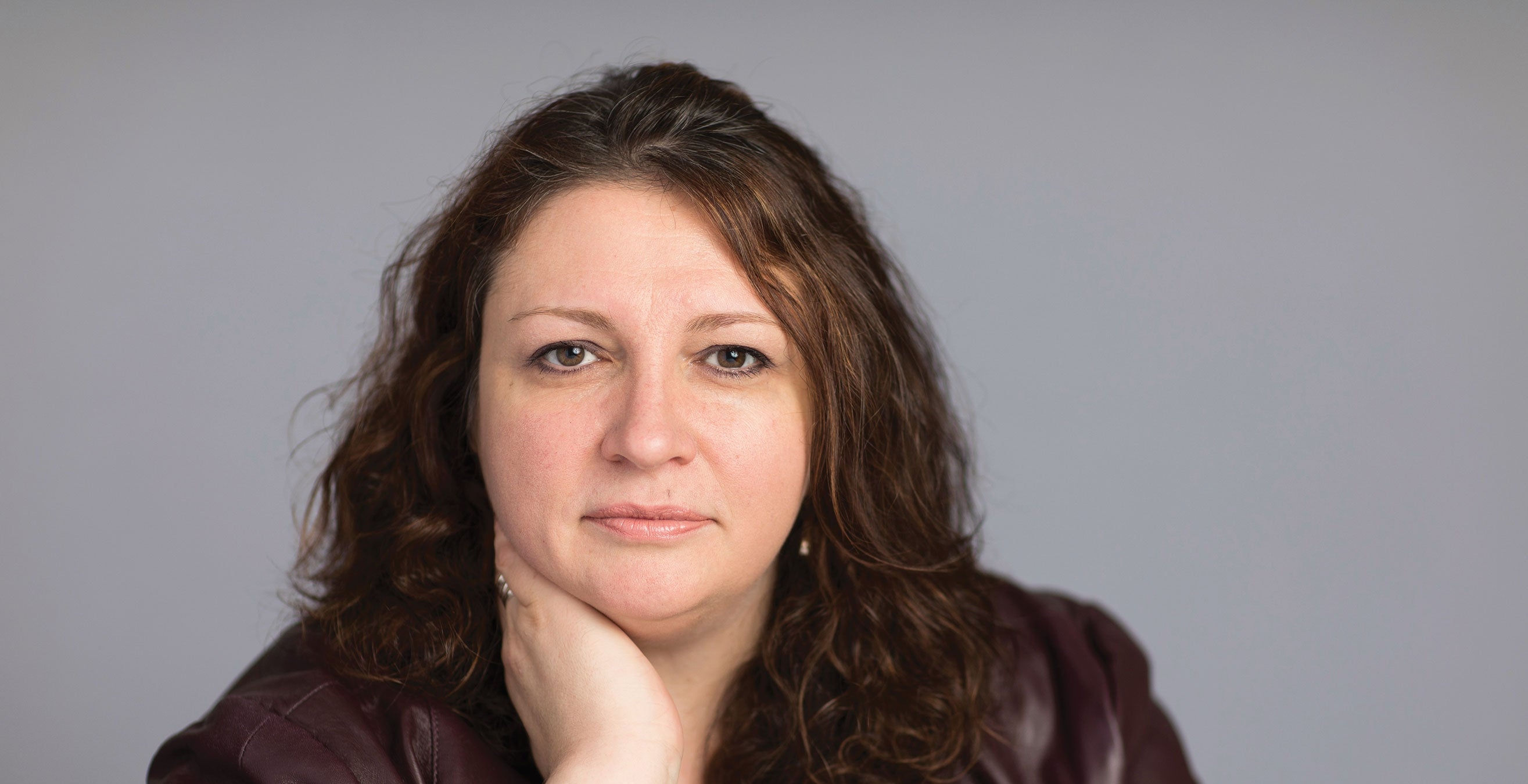Eve was 12 when she first started thinking about suicide. By the time she was a senior in high school, she had tried several times. Even when hospitalized and on 17 medications, Eve (not her real name) was still trying to end her life.
“I went up to see her,” recalls her doctor, Lisa Pan, years later, “and there was nothing. No side effects. No response. Nothing.”
Pan, a Pitt professor of psychiatry and clinical and translational science, began her research career studying neuroimaging markers of suicide risk in young people. She trained under the wing of David Brent, a professor of psychiatry and pediatrics who holds Pitt’s Endowed Chair in Suicide Studies and is among the world’s foremost experts on treatment-resistant depression and suicidal behavior in teens. He’s also the cofounder of Services for Teens at Risk (STAR) at Western Psychiatric Institute and Clinic, where Pan saw Eve.
Unsure of how to help the teen, Pan thought of an out-of-the-box approach. Could they find any new leads by examining a sampling of cerebrospinal fluid (CSF) for clues of what was circulating in Eve’s central nervous system? She decided to give it a try, with Brent’s support.
After doing a complete neurological workup with the help of David Finegold, a professor of genetics at Pitt’s Graduate School of Public Health, the team found something curious. Eve’s CSF levels showed an extremely low level of biopterin, a chemical the body uses to make several neurotransmitters, the brain’s chemical messengers. Pan and Brent started her on a replacement-therapy regimen, and over the next few months, they observed the gradual return of this long-absent chemical so crucial to the production of serotonin, dopamine, norepinephrine, pain modulators, and melatonin.
It had a profound effect on Eve. After 10 weeks and some adjustments to her medications, Eve was feeling what psychiatrists call euthymia—normal.
Pan and her team were skeptical at first. Then they tried the same screening on three more patients suffering from treatment-resistant depression, figuring they were long shots, as well. But all three turned out to have similar metabolic disorders, all of which improved once their systems were regularly “fed” with special, highly absorbable forms of what were essentially vitamins.
The scientists’ disbelief sharpened to questions: How did these biochemical anomalies happen to these young people? Could there be others who are one lumbar-puncture test away from finding their own paths to recovery? And what if the team could build a cheaper and easier test?
Practically overnight, these investigations became the focus of Pan’s career. Their first phase culminated in a study published in the American Journal of Psychiatry, and that was one of the most lauded psychiatric papers of 2016. Though the study included just 33 patients, the results were striking. Of the patients with treatment-resistant depression, 64 percent had some form of metabolic deficiency of the central nervous system; controls had absolutely none. And once the patients’ deficiencies were treated, the majority of their symptoms improved. For two of them, their depression vanished altogether.
The team is now hard at work on a multi-front research effort: validating their findings in a larger patient sample; examining possible genetic and environmental factors in these deficiencies; widening their scope to include more metabolic chemicals; and developing a bigger, better test.
This work does not involve a treatment study, Pan emphasizes. It is an effort to understand some of the molecular mechanics of treatment-resistant depression and suicidal behavior. What clinicians and researchers now lump together under the umbrella of depression may be symptoms of many different diseases or disorders, which the team is now beginning to categorize through multidisciplinary research.
There’s still much work to be done, but the investigations have already helped young people, including Eve. With continuous treatment, she is leading a normal life as a college graduate and professional. Pan hopes that through her research, others may follow suit.
This is an adaptation of “Cut Off,” originally published in Pitt Med magazine. Read the full story at Pitt Med.
Breakthroughs in the Making
Need to Know
Are the concepts of knowledge, understanding, and wisdom universal? Edouard Machery, a distinguished professor in Pitt's Department of History and Philosophy of Science, is coleading an international, multidisciplinary group of researchers exploring this question. The Geography of Philosophy Project is a comprehensive study of how environment, background, and upbringing influence questions of knowledge around the world. Machery says the work, which is supported by a $2.6 million grant from the John Templeton Foundation, could ultimately help individuals on opposite sides of racial, ethnic, gender, or class divides see their counterparts' points of view.
Waste Not
What's one way to reduce plastic pollution? Preventing the material from becoming waste in the first place. Pitt researchers are working to alter the microstructure of recyclable plastic so that it can't be recycled because of its various inseparable layers. The team, made up of Eric Beckman, Susan Fullerton, and Sachin Velankar from the Department of Chemical and Petroleum Engineering, was recently recognized at the World Economic Forum, where the game-changing idea earned them a prize from the Ellen MacArthur Foundation and tech accelerator NineSigma.
Shared Sight
Computers are capable of recognizing individual human faces, but programming them to decipher subjective attributes—like formal or feminine—has remained a challenge. Adriana Kovashka and Nils Murrugarra-Llerena from Pitt's Department of Computer Science are tackling the task by developing “gaze maps.” The visual guides, made by mapping people's eye movements when identifying a subjective attribute in an image, may assist scientists in programming machines with more human-like sight and improve communication between people and machines.
Opening image: Lisa Pan
This article appeared in the Summer 2018 issue of Pitt Magazine.





